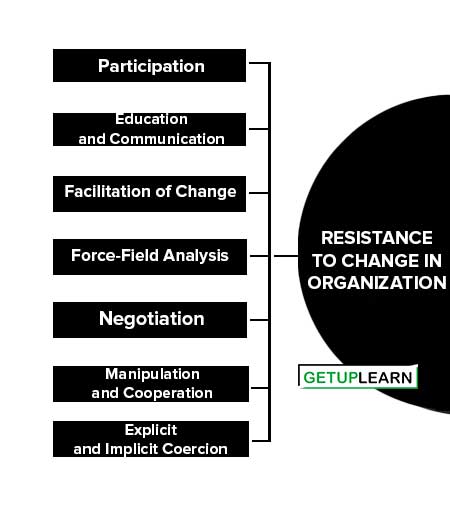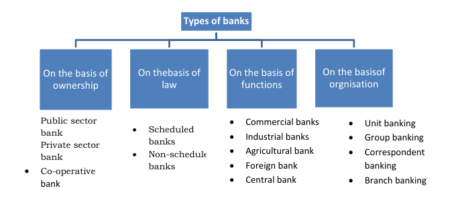Although organizations initiate changes in order to adjust to the changes in their environments people sometimes resist them. Therefore, managers need to recognize the manifestations of resistance both in themselves and in others, if they want to be more effective in supporting change. The sources of resistance to change within organizations are classified into organizational sources of resistance and individual sources of resistance.
Table of Contents
Organizational Sources of Resistance
Organizational sources of resistance can be divided into the following six general groups:
- Over-determination or structural inertia refers to the tendency of an organization’s rules, policies, and structure to maintain the existing conditions and therefore resist change even when the change would benefit the organization more than stability.
- When an organization tries to change one of its divisions or part of the division without recognizing the interdependence of the division with other divisions of the organization, then it is said to have a narrow focus on change. Often a part of a division cannot be changed without changing the whole division.
-
Group inertia may weaken an individual’s attempt to bring about change.
- Resistance may also take the form of threatened expertise if the change tends to weaken special expertise built after years of experience. Organizational restructuring that involves reducing the number of job categories often meets this kind of resistance.
- Any change that may alter the power relationships within an organization may meet the form of resistance known as ‘threatened power’.
- Resistance may occur when a change threatens the quantum of resource allocation from one part of the organization to another.
Individual Sources of Resistance
According to researchers, individuals have the following reasons for resisting change:
- Simple habits create a lot of resistance. Most people prefer to do their work the way they did it last week rather than learn a new approach.
- Perhaps the biggest cause of employee resistance to change is uncertainty. In the face of impending change, employees are likely to become anxious and nervous. They worry about their ability to meet new job demands, therefore, leading to feelings of job insecurity.
- Some people resist change to avoid feelings of loss. For example, many organizations change interventions and alter work arrangements, thus disrupting existing social networks. Social relationships are important to most people, so they resist any change that might adversely affect those relationships. Change may also threaten people’s feelings of familiarity and self-confidence.
- People may resist change because their perceptions of underlying circumstances differ from the perceptions of those who are promoting the change.
Overcoming Resistance to Change
Managers need not abandon planned change in the face of resistance. Before recommending specific approaches to overcome resistance, there are three key conclusions that should be kept in mind. First, an organization must be ready for change.
Second, the top management should inform the employees about the process of change. Third, the employees’ perceptions or interpretations of a change should be considered. The following methods of overcoming resistance to change are as follows:
- Participation
- Education and Communication
- Facilitation of Change
- Force-Field Analysis
- Negotiation
- Manipulation and Cooperation
- Explicit and Implicit Coercion

Participation
Participation is generally considered the most effective technique for overcoming resistance to change. Employees who take part in planning and implementing change are better able to understand the reasons for the change than those who are not involved.
They become committed to the change and make it work. Employees who have the opportunity to express their own ideas and to understand the perspectives of others are likely to accept change gracefully. It is a time-consuming process.
Education and Communication
Educating employees about the need for and the expected results of an impending change help reduce their resistance. Managers should maintain an open channel of communication while planning and implementing change. However, it is also a time-consuming process.
Facilitation of Change
Knowing ahead of time that employees are likely to resist change then the manager should do as much as possible to help them cope with uncertainty and feeling of loss. Introducing change gradually, making only necessary changes, announcing changes in advance, and allowing time for people to adjust to new ways of doing things can help reduce resistance.
Force-Field Analysis
In almost any situation where a change is being planned, there are forces acting for and against the change. In force-field analysis, the managers list each set of forces and then try to remove or minimize some of the forces acting against the change.
Negotiation
Where someone or some group will clearly lose out in a change and where that group has considerable power to resist, negotiation is required. Sometimes it is a relatively easy way to avoid major resistance.
Manipulation and Cooperation
This is followed when other tactics will not work or are too expensive. It can be quick and inexpensive. However, it can lead to further problems if people feel manipulated.
Explicit and Implicit Coercion
This is adopted where speed is essential and where the change initiators possess considerable power. It is speedy and can overcome resistance.
Each of the above methods has its advantages and disadvantages. There is no universal strategy for overcoming resistance to change.
Hence, an organization that plans to introduce certain changes must be prepared to face resistance from its employees. An organization should also have a planned approach to overcome such resistance.
FAQs Section
How do you overcome resistance to change?
The following methods of overcoming resistance to change are as follows:
1. Participation
2. Education and Communication
3. Facilitation of Change
4. Force-Field Analysis
5. Negotiation
6. Manipulation and Cooperation
7. Explicit and Implicit Coercion.

